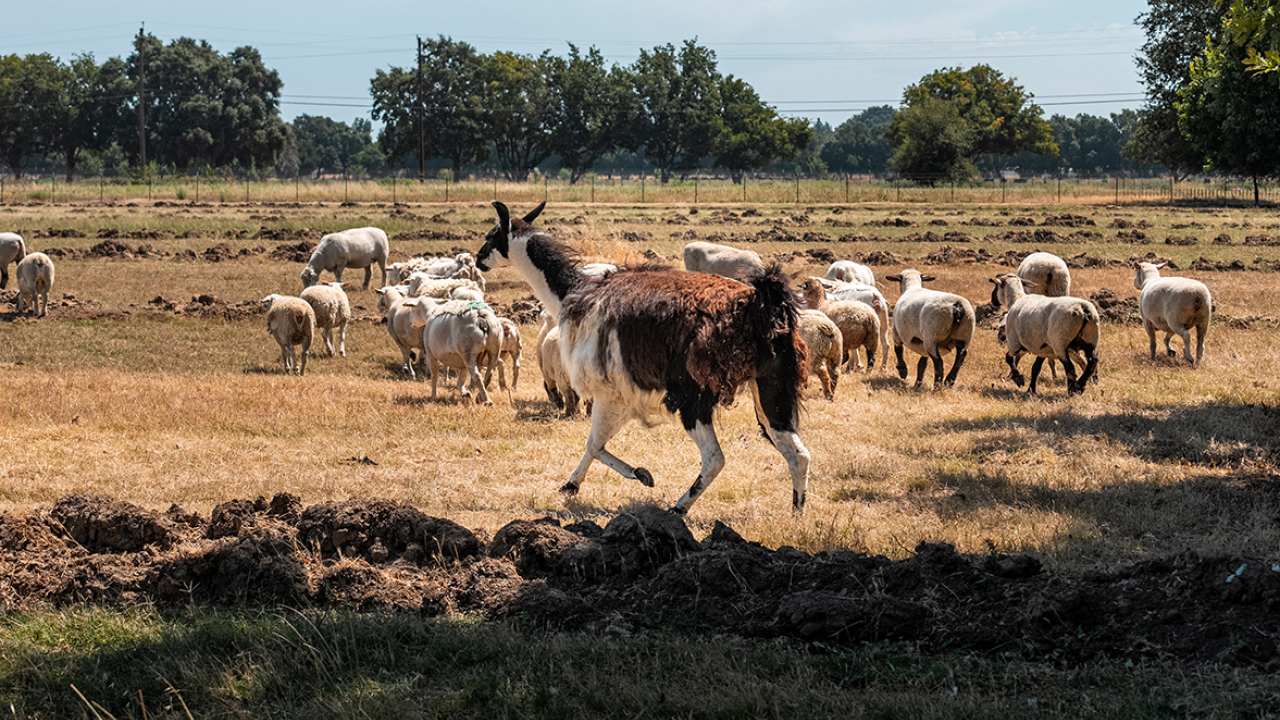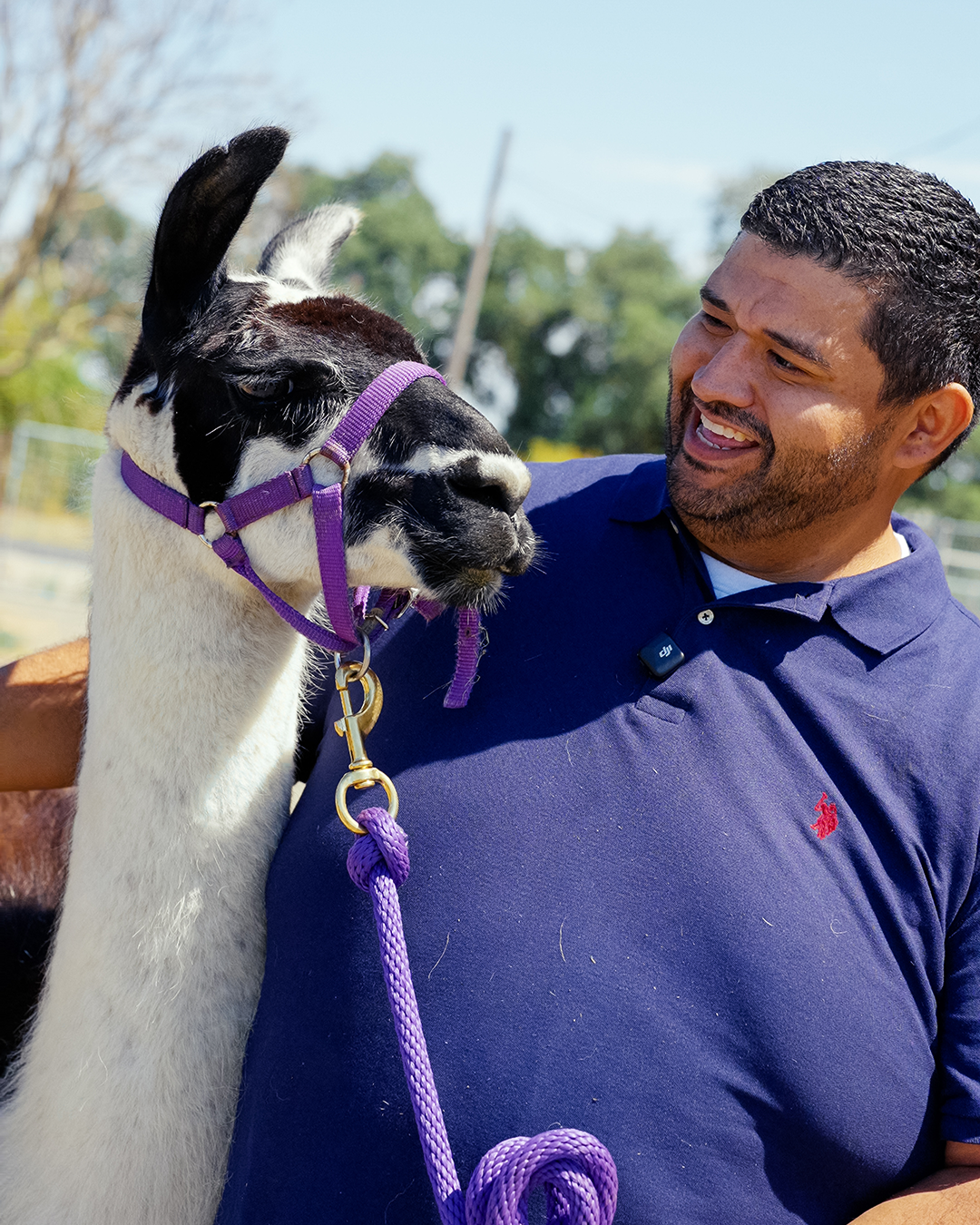
Name that Llama, New Guardian of the UC Davis Sheep
Animal Science Wants Your Help Naming Llama
She is sweet, sassy, nearly 300 pounds and very into sheep.
Meet the llama who moved into the Department of Animal Science’s sheep barn in July to help guard the flock of 150 from predators.
“She wants to be their friend but they aren’t too sure yet,” Matt Hayes, sheep facilities manager, said. “She’s the new kid trying to make friends on the playground.”
She also needs a name. The department is asking for suggestions from students and the campus community. The rules: “Nothing obscene. Something easy to say, remember and can call from a pasture,” Hayes said.
Right now, the 9-year-old is being called llama by some and Tina by some “Napolean Dynamite” fans.
She came from Wyoming where she was called Bandita and bred to be a pack animal for range trips. But she was too small, which led her to UC Davis to protect the sheep, including the UC Davis Sheepmowers.
Natural guardian

The sheep barn is in a rural part of campus near Putah Creek and close to coyote habitat. A guard dog isn’t feasible for protection as bikers, joggers and people with small dogs pass by the site. Llamas are natural protectors and generally unbothered by dogs and people, plus they have similar diets to sheep.
“Llamas are kind of a natural guardian animal,” Hayes said. “They fit in really well with what we’re already doing and we don’t have to change our management much. We call her our unicorn.”
She is a mix of white, brown and black, with her back covered in brown and a white underbelly and neck that gives way to a black face, ears and eyes. When she alerts her head will perk up and she might let out a noise that is a cross between a squeal and moan. If her concern increases, she will stomp her feet, pin back her ears, start gurgling to spit and even rear up.
“She’s like a sheep, a sheep that needs to be handled kind of like a horse,” Hayes said.
Around the sheep and sheep barn staff, she has never kicked or spit, even when getting used to the new environment. Sometimes she plays games when it comes to being haltered and avoids handlers, eventually settling down for some treats.
“Most of the day she sleeps with the sheep or goes outside with them,” Hayes said. “She’s a sweetheart.”
Media Resources
- Matt Hayes, Department of Animal Science, mhayes@ucdavis.edu
- Emily C. Dooley, College of Agricultural and Environmental Sciences, ecdooley@ucdavis.edu